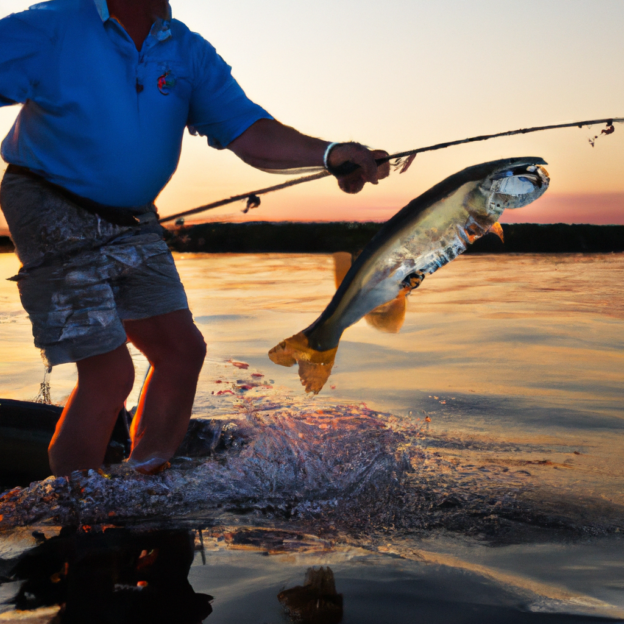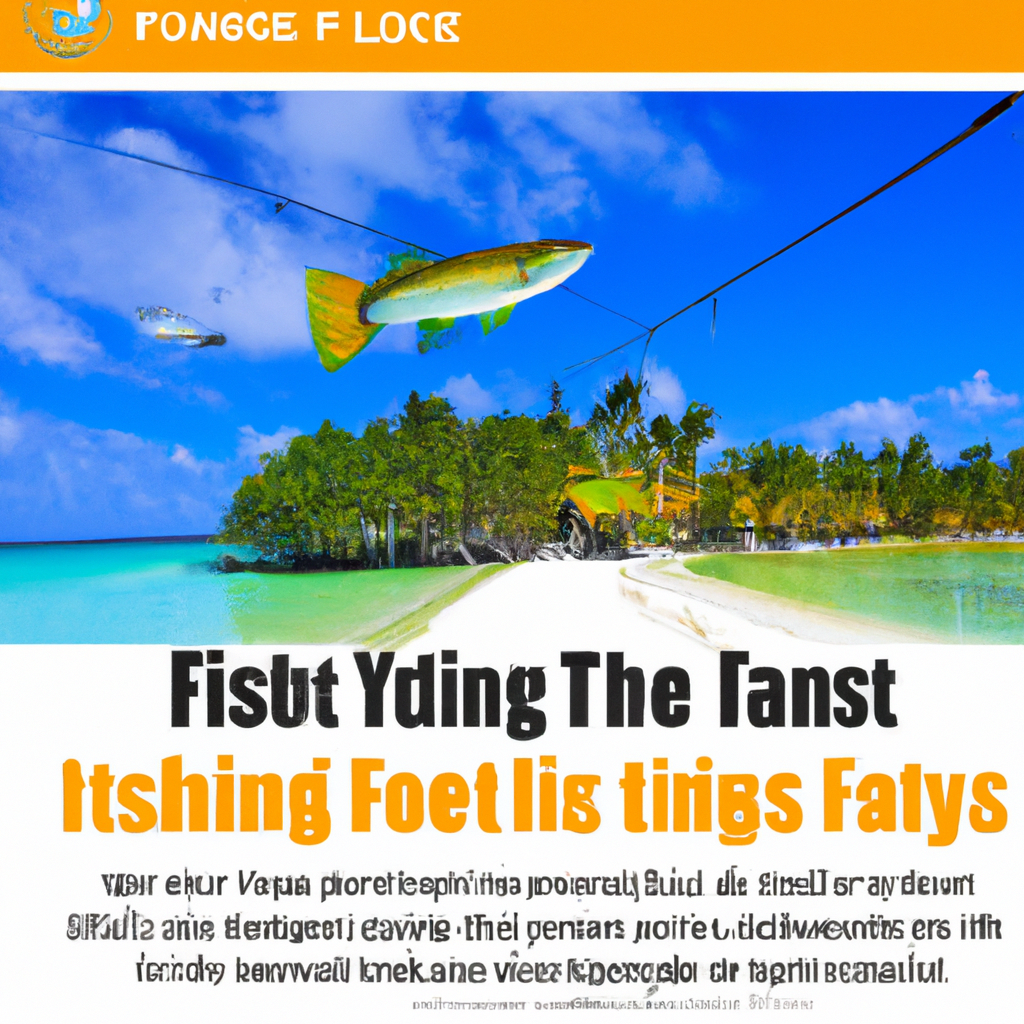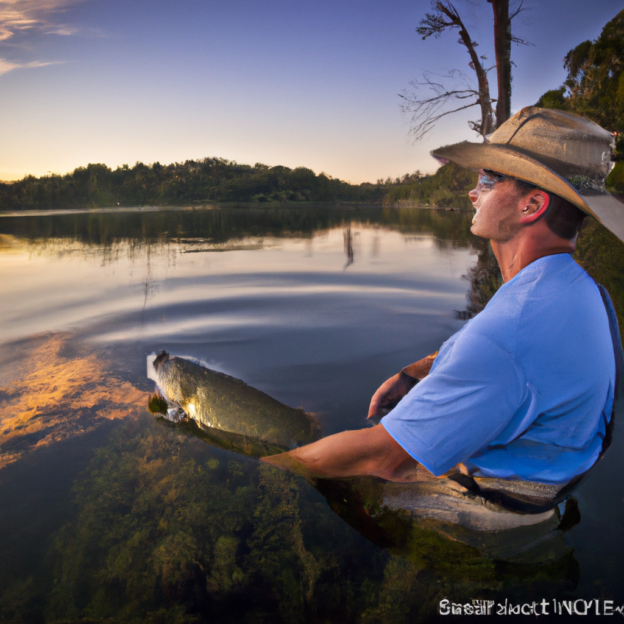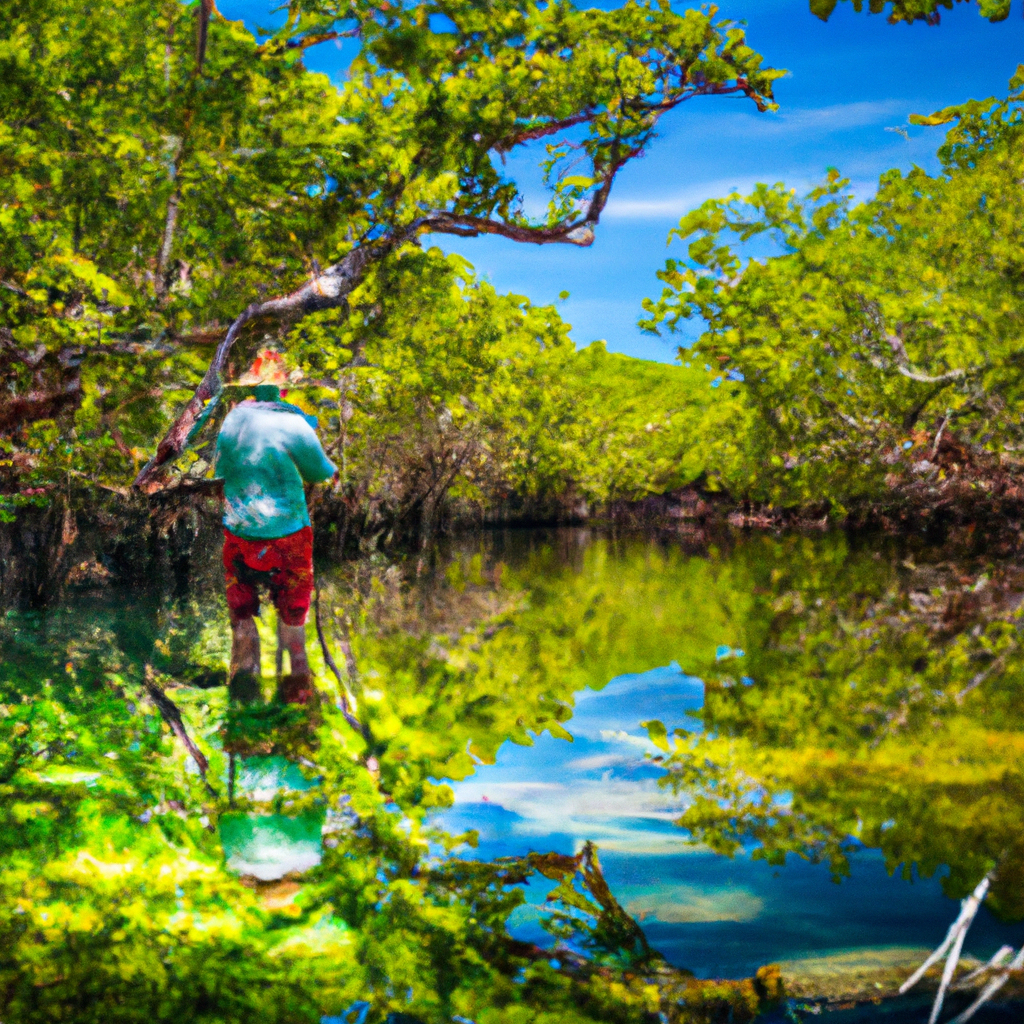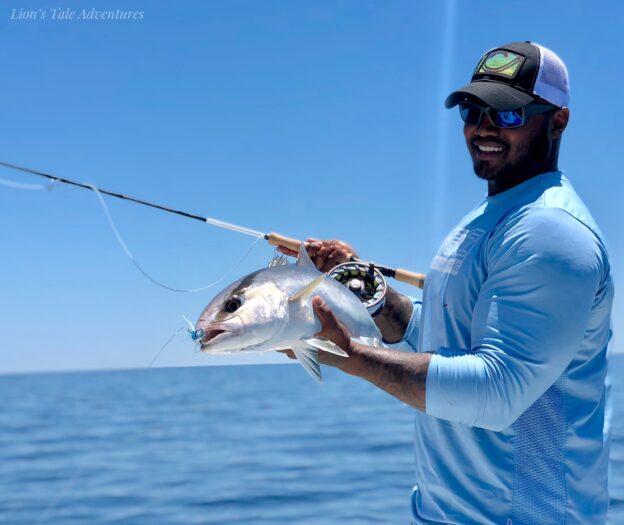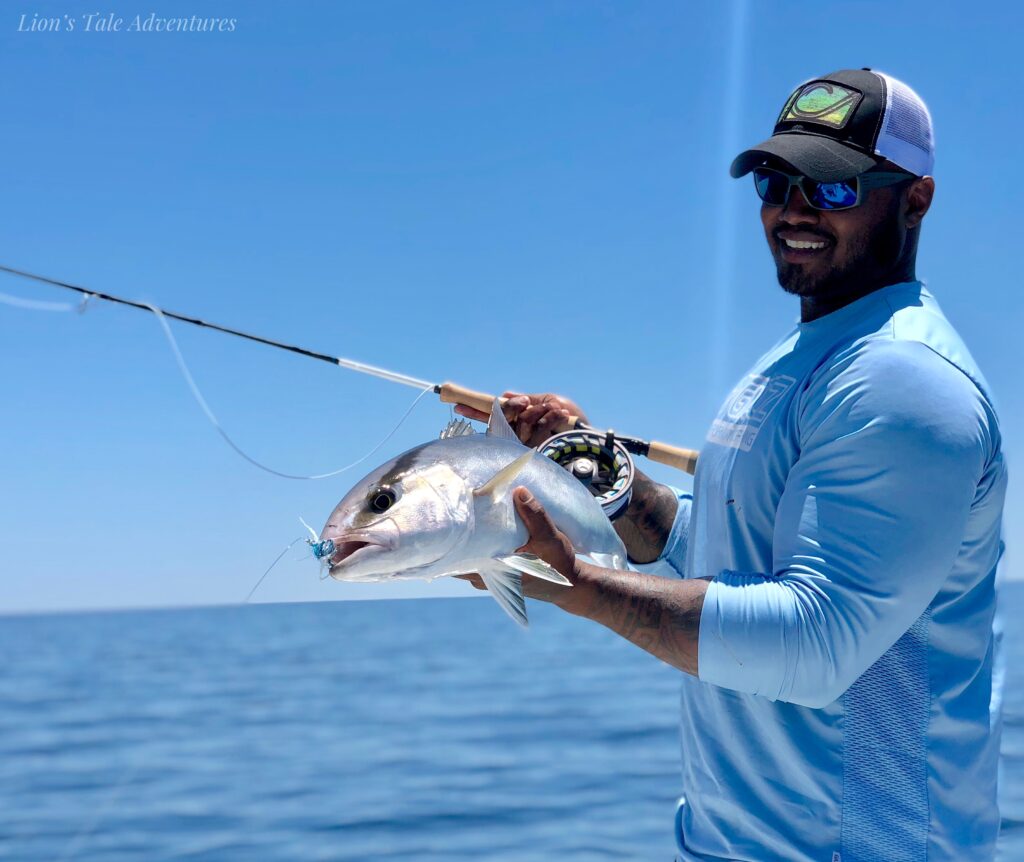Are you an avid angler looking for a new and exciting fishing experience? Well, look no further! The alluring waters of Florida offer a captivating opportunity to fly fish for bonefish. This article will provide you with all the information you need to know about this thrilling angling adventure. From the best locations to the most effective techniques, get ready to embark on an unforgettable journey to catch these elusive and captivating fish in the sunshine state. So grab your rod, tie on your favorite flies, and prepare for an unforgettable fishing experience like no other.

This image is property of pixabay.com.
Overview of Bonefish
Introduction to bonefish
Bonefish, scientifically known as Albula vulpes, are a highly sought-after species among fly anglers. Widely regarded as one of the most challenging and exhilarating game fish, bonefish are known for their speed, agility, and powerful runs. Found in warm, tropical waters, these silver, scaleless fish can be found in shallow flats and mangrove-lined lagoons, making them a prime target for fly fishing enthusiasts.
Characteristics of bonefish
Bonefish are characterized by their sleek, torpedo-shaped bodies, which enable them to swiftly navigate through the water. They typically range in size from 2 to 5 pounds, with some specimens reaching weights of over 10 pounds. With their large, bony mouths, they are well-equipped for feeding on a variety of prey, including crustaceans and small fish.
Habitat and distribution
Bonefish are predominantly found in the warm waters of the Atlantic Ocean and the Caribbean Sea. They inhabit the coastal flats and shallow waters of Florida, the Bahamas, Cuba, and other tropical destinations. These fish thrive in sandy or gravelly habitats, as well as areas with seagrass beds and mangrove stands. Their preference for these habitats is due to their abundance of prey and the protective cover they provide.
Fly Fishing for Bonefish
Equipment and gear
When it comes to fly fishing for bonefish, it is essential to have the right equipment and gear. A sturdy saltwater fly rod between 8 and 10 weight is recommended to handle the power and speed of bonefish. A large arbor fly reel with a smooth drag system is crucial for controlling the blistering runs of these fish. As for the fly line, a weight-forward floating line is the go-to choice for bonefish. Additionally, a selection of bonefish flies, leaders, tippets, and quality polarized sunglasses are essential items to pack for a successful bonefishing trip.
Choosing the right fly
Selecting the right fly is crucial when targeting bonefish. Due to their feeding habits, bonefish primarily target small crustaceans such as shrimp and crabs, making realistic shrimp or crab imitation flies highly effective. Flies tied in various colors, sizes, and weights should be considered to match the conditions and the preferences of the fish. It is advisable to have a mix of patterns that imitate both live and dead prey, such as the Gotcha, Crazy Charlie, and Bonefish Bitters.
Casting techniques
Casting accuracy and distance are of utmost importance in bonefishing. The ability to present the fly delicately, at the right distance, and without spooking the fish is crucial. The key to successful bonefish casting is the double haul technique, which enables the angler to generate higher line speed and longer casts. Additionally, practicing the roll cast, backhand cast, and reach cast can prove invaluable in different fishing scenarios. It is essential to fine-tune your casting skills before heading out to the flats to ensure you can make accurate and precise presentations.
Understanding bonefish behavior
To increase your chances of success, it is vital to understand the behavior of bonefish. These fish are known to feed actively during incoming tides and at specific times of the day, such as early morning and late afternoon. They often travel in small schools or pods, so targeting areas where multiple fish congregate can be advantageous. Bonefish are highly sensitive to noise and movement, so stealth and patience are crucial. Understanding their migration patterns, feeding habits, and preferred habitats will significantly improve your chances of hooking into these elusive fish.
Best Time and Locations for Bonefish Fishing in Florida
Seasonal variations
While bonefish can be found in Florida waters year-round, there are some seasonal variations to consider. The cooler winter months of December to February tend to be more challenging for bonefishing, as the water temperatures can drop significantly. Spring and fall are generally regarded as the best seasons, as the water temperatures are warmer, and the bonefish are more active. Summer months can be productive as well, although the higher water temperatures can make the fish more lethargic.
Top bonefishing destinations in Florida
Florida offers a variety of excellent bonefishing destinations. The Florida Keys, particularly Islamorada, is known as the bonefish capital of the world. The extensive flats and channels in this region provide prime habitat for bonefish. Biscayne Bay, located near Miami, is another popular location due to its clear, shallow waters and abundance of bonefish. The Everglades National Park is also known for its world-class bonefishing opportunities. Additionally, the Tampa Bay area and the Indian River Lagoon are frequented by anglers seeking bonefish.
Factors to consider when selecting a location
When choosing a bonefishing location in Florida, several factors should be taken into account. The availability of knowledgeable fishing guides is crucial, especially for those new to bonefishing. Local knowledge can greatly increase your chances of success and ensure a memorable experience. Access to productive flats, ease of transportation, and the presence of suitable accommodations are also important considerations. It is essential to research and gather information about different locations to find the best fit for your fishing goals and preferences.
Tides and Weather Conditions
Importance of tides in bonefishing
Tides play a fundamental role in bonefishing. As the tide moves in and out, it creates water movement that stirs up prey and triggers feeding activity in bonefish. During incoming tides, fish move onto the flats to feed, making it an optimal time for angling. Understanding the tidal patterns and planning your fishing trips accordingly can significantly enhance your chances of encountering feeding bonefish.
How to read tides
To effectively read tides, it is crucial to consult tide charts specific to your fishing location. These charts provide information on the times and heights of high and low tides. The interval between the high and low tides, known as the tidal range, can also be informative. A larger tidal range generally leads to stronger water movement, which can be advantageous for bonefishing. By studying these charts and observing the water levels during specific times, you can establish patterns and make educated decisions about when and where to fish.
Impact of weather conditions on bonefish
Weather conditions can significantly affect bonefishing. A bright, sunny day with calm winds and clear skies is generally ideal, as it provides optimal visibility on the flats. However, overcast days can offer advantages as well, as bonefish tend to venture into shallower water and are less wary of predators. Windy conditions can make casting and presentation more challenging, but they can also push baitfish and prey closer to the shore, attracting feeding bonefish. It is essential to monitor weather forecasts and be prepared to adapt your strategies to the prevailing conditions.

This image is property of pixabay.com.
Guided vs. Independent Fishing
Pros and cons of hiring a fishing guide
Hiring a fishing guide can offer numerous benefits when targeting bonefish. Guides possess extensive knowledge of the local fishing areas and can help you navigate the flats safely. Their expertise in finding fish, reading water conditions, and suggesting effective fly patterns can dramatically increase your chances of success. Guides also provide instruction on casting techniques and offer insights into bonefish behavior. However, hiring a guide comes at an additional cost and may limit your freedom to explore different areas independently.
Benefits of DIY bonefishing
For more experienced anglers or those seeking greater independence, do-it-yourself (DIY) bonefishing can be an appealing option. DIY fishing allows you to explore various locations, fish at your own pace, and adapt your strategies as you see fit. It offers a sense of adventure and allows for a more personalized experience. However, it is crucial to have sufficient knowledge of the area, tides, and bonefish behavior to maximize your chances of success. Additionally, DIY bonefishing requires more planning and research to identify productive flats and navigate unfamiliar waters.
Tips for booking a reliable fishing guide
If you decide to hire a fishing guide for your bonefishing adventure, it is essential to book with a reputable and reliable guide. Recommendations from fellow anglers, online reviews, and testimonials can provide valuable insights. Look for guides who are experienced, knowledgeable about local waters, and possess appropriate licenses and permits. It is also useful to communicate your goals and expectations with the guide before booking to ensure a good fit. Clear communication, mutual respect, and a positive rapport are key to a successful and enjoyable guided fishing experience.
Preparation and Planning
Obtaining necessary permits and licenses
Before embarking on your bonefishing trip, it is crucial to ensure you have the necessary permits and licenses. Florida requires a saltwater fishing license for all anglers aged 16 and older to fish in state waters. Additionally, many different locations, such as national parks and wildlife refuges, may have specific permits or regulations. Researching and understanding these requirements will ensure compliance with the law and help preserve the sustainability of the fishery.
Researching fishing regulations
Familiarizing yourself with fishing regulations is an important part of responsible angling. These regulations may include size restrictions, bag limits, and seasonal closures to protect and conserve the bonefish population. Ensure you are up to date with the latest regulations for the specific area you plan to fish. By exercising responsible angling practices and adhering to the regulations, you contribute to the long-term sustainability of bonefish populations and their habitats.
Packing essentials for a bonefishing trip
To have a successful bonefishing trip, it is crucial to pack the right essentials. Aside from your fishing gear and flies, consider bringing a reliable sunscreen to protect yourself from the intense sun exposure. A hat with a wide brim and polarized sunglasses are essential to shield your eyes from the glare and improve visibility on the flats. It is also advisable to pack a lightweight, breathable long-sleeved shirt and pants to protect yourself from sunburn and biting insects. Carry sufficient water, snacks, and a fully charged cell phone for communication and emergencies.
Safety precautions to consider
When venturing into the flats for bonefishing, it is important to prioritize safety. Shallow waters and uneven terrain can be hazardous, so wearing appropriate footwear, such as flats boots with sturdy soles, is essential. Pay attention to your surroundings to avoid stepping on seagrass beds or damaging delicate coral reefs. Additionally, it is advisable to inform someone about your fishing plans and approximate return time. Familiarize yourself with local emergency procedures and have a basic first aid kit on hand. By taking these safety precautions, you can enjoy your bonefishing experience while minimizing potential risks.

This image is property of pixabay.com.
Techniques and Strategies for Catching Bonefish
Stalking techniques
Stalking bonefish requires stealth and patience. Moving slowly and quietly along the flats is vital to avoid spooking the fish. Wading quietly, with minimal disturbance, allows you to get closer to feeding or cruising bonefish. It is crucial to cast well ahead and place your fly gently in the path of the approaching fish. Observing fish behavior, such as their direction and speed, can aid in positioning yourself for a successful presentation.
Presenting the fly
Presenting the fly accurately to bonefish is essential for enticing a strike. A delicate presentation ensures that the fly lands softly, mimicking natural prey and minimizing the chances of spooking the fish. Leading the fish with your cast and allowing the fly to sink naturally can increase your chances of a successful hookup. The goal is to create a realistic and enticing movement that triggers the predatory instincts of the bonefish.
Stripping and retrieving techniques
Once the bonefish spots your fly and starts pursuing it, it is crucial to use the right stripping techniques to entice a strike. Long, slow strips followed by short, quick strips can mimic the movement patterns of fleeing prey. Pausing intermittently can also create a sense of vulnerability and trigger a strike. Pay attention to the fish’s reaction and adjust your retrieve speed and pattern accordingly. It is important to maintain tension on the line at all times to be prepared for the bonefish’s sudden take.
Dealing with challenging situations
In bonefishing, challenges are inevitably part of the experience. One common challenge is when bonefish become “spooky” and refuse to take the fly. In such situations, downsizing your fly, using lighter tippet materials, and presenting your fly farther away from the fish can increase your chances of success. Wind can also pose challenges, affecting casting accuracy and the natural movement of the fly. Adapting your casting techniques, employing shorter casts with less line in the air, and using larger and heavier flies can help overcome the breeze.
Conservation Practices
Understanding the importance of conservation
Conservation is crucial for the long-term sustainability of bonefish populations and their habitats. By practicing responsible angling and respecting the environment, anglers contribute to the preservation of these prized game fish. Being aware of the impact of our actions, including littering, damaging the flats, or excessive fishing pressure, is essential to protect the fragile marine ecosystems in which bonefish thrive. A healthy population of bonefish benefits not only anglers but also the local economies and the overall health of coastal ecosystems.
Catch and release principles
Catch and release is a fundamental practice in bonefishing to ensure the survival and well-being of released fish. Proper handling techniques, including minimizing air exposure, avoiding excessive handling, and using barbless hooks, are essential to minimize stress and injury to the fish. When releasing a bonefish, providing support until it is ready to swim away and avoiding lifting it out of the water are critical for its survival. Documenting the catch through photography or measurements can be done quickly and responsibly, ensuring the fish’s swift return to its natural habitat.
Reducing environmental impact
To reduce your environmental impact while bonefishing, it is important to practice leave-no-trace principles. This includes properly disposing of any waste, including fishing line and packaging materials. Avoid damaging seagrass beds and coral reefs by wading carefully and being mindful of your surroundings. Respect any wildlife you encounter, including birds and other marine animals. By being mindful of the delicate ecosystem and leaving it pristine, you contribute to the long-term health and preservation of bonefish habitats.

Common Challenges and How to Overcome Them
Dealing with spooked fish
One of the challenges in bonefishing is when fish become spooked and refuse to take the fly. To overcome this, it is crucial to maintain a low profile and approach the fish carefully. Slow down your movements and casting, and steer clear of splashing or making any sudden noises that may alert the fish. Downsizing your fly and using lighter tippet materials can also help in fooling these wary fish. Patience and persistence are key when dealing with spooked fish, as they may require repeated presentations before striking.
Handling windy conditions
Windy conditions can make bonefishing more challenging, affecting casting accuracy and the natural drift of the fly. One way to overcome this challenge is by adapting your casting techniques. Employing shorter casts with less line in the air and utilizing the double haul technique can help generate higher line speed and improved accuracy. Using larger and heavier flies can also assist in cutting through the wind and achieving the desired presentation. It is important to remain patient during windy conditions and adjust your strategy accordingly.
Adapting to changing tides
Changing tides can influence bonefish behavior and their feeding patterns. As the tide rises or falls, fish may move onto or off the flats, requiring anglers to adapt their strategies accordingly. When the tide is rising and fish are moving in, it is essential to position yourself in their path and present the fly ahead of them. Conversely, during falling tides, fish may retreat to deeper channels or edges of the flats, necessitating adjustments in casting distance and retrieval patterns. Adapting to these changing tides will increase your chances of encountering feeding bonefish throughout the day.
Tips for Successful Bonefishing
Observing the surrounding environment
To improve your chances of a successful bonefishing experience, it is crucial to observe and understand the surrounding environment. Look for signs of fish activity, such as tailing, wakes, or nervous water, which indicate the presence of feeding bonefish. Pay attention to the interplay between tides, wind, and light conditions, as these factors greatly influence fish behavior. By being attuned to your surroundings, you can make informed decisions about where and how to target bonefish effectively.
Patience and persistence
Successful bonefishing requires patience and persistence. Bonefish can be elusive, and encounters with fish may be infrequent. By staying focused, casting accurately, and maintaining a positive mindset, you increase your chances of success. Remember that bonefish can appear unexpectedly, so it is crucial to maintain concentration throughout the day. By displaying patience and not becoming discouraged by missed opportunities, you set yourself up for a rewarding bonefishing experience.
Learning from experienced anglers
Learning from experienced anglers can significantly accelerate your bonefishing skills and knowledge. Participating in workshops, seminars, or guided trips led by seasoned anglers can provide valuable insights into successful techniques and strategies. Engaging in discussions with fellow anglers, both in-person and online, allows you to learn from their experiences and adapt their approaches to your own fishing style. By seeking guidance and embracing a continuous learning mindset, you can enhance your bonefishing abilities and increase your chances of success.
Improving your casting accuracy
Casting accuracy is paramount in bonefishing, as precise presentations greatly increase your chances of enticing a strike. Practice regularly, both on and off the water, to improve your casting skills. Utilize casting drills to hone your accuracy and distance control. Additionally, seek feedback from experienced casters or even consider professional casting lessons to refine your technique. By investing time and effort into improving your casting accuracy, you are equipping yourself with a vital skill that will greatly enhance your bonefishing success.
Fly fishing for bonefish in Florida offers an exciting and rewarding angling experience. Understanding the characteristics and behavior of bonefish, along with the necessary equipment and techniques, is crucial for a successful fishing trip. By selecting the right time and location, considering the impact of tides and weather conditions, and making informed decisions about guided versus independent fishing, you can optimize your chances of encountering these thrilling game fish. By practicing responsible angling, prioritizing conservation, and being prepared for common challenges, you can enjoy the thrill of hooking into a bonefish while ensuring the long-term sustainability of this remarkable species. So pack your gear, plan your trip, and get ready to embark on an unforgettable bonefishing adventure in the beautiful waters of Florida.


